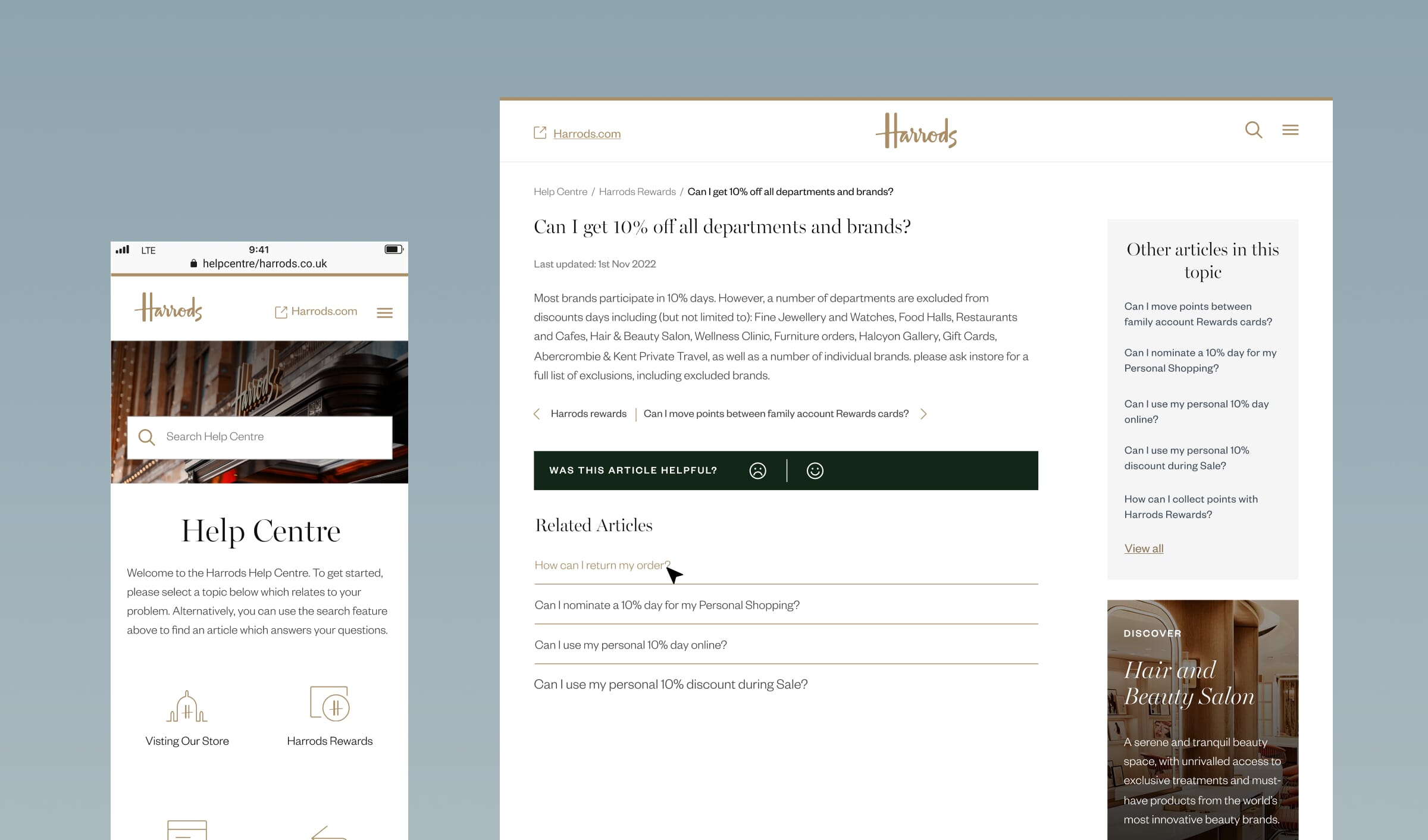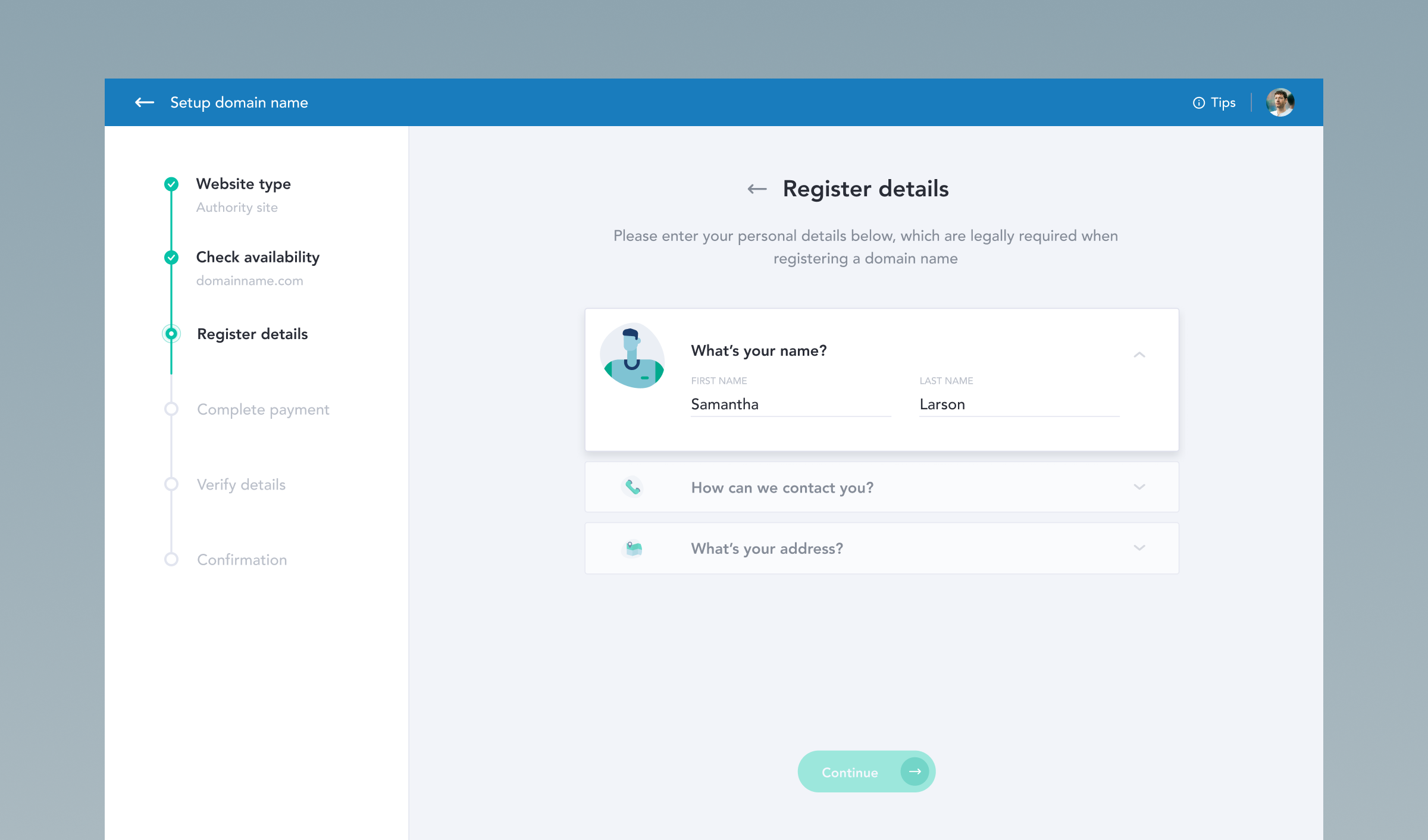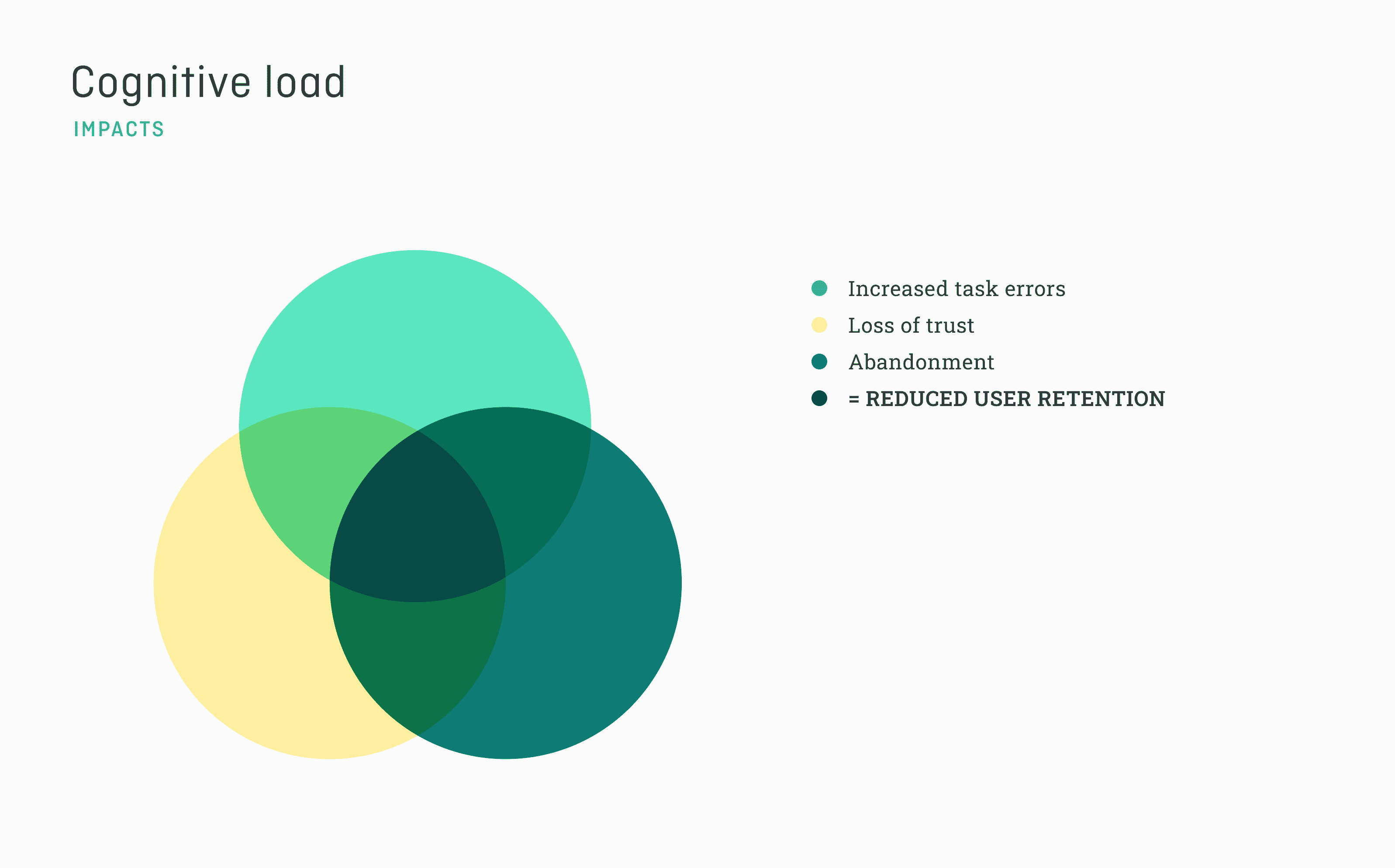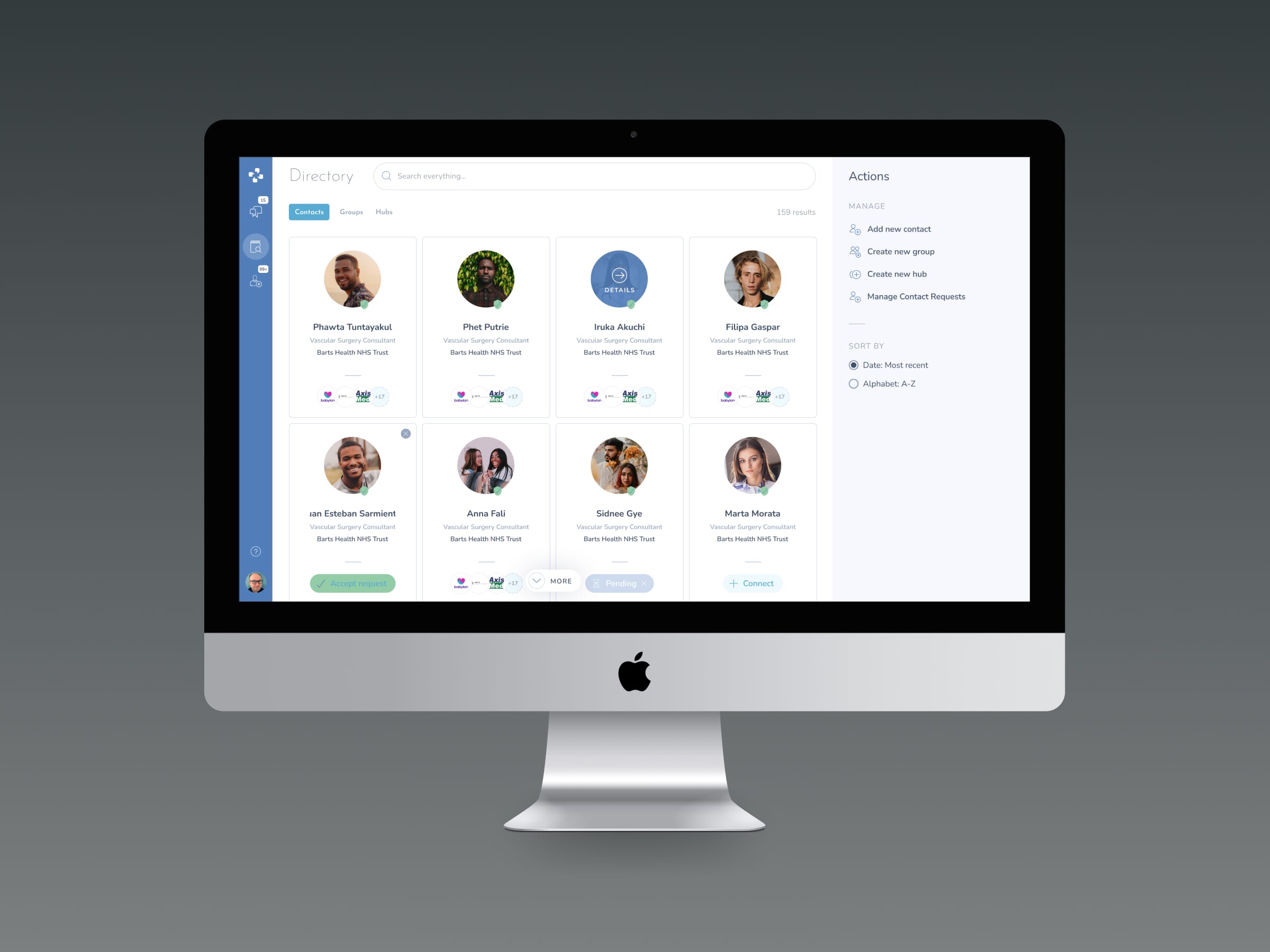Understanding cognitive overload in UX
Cognitive overload happens when users are bombarded with too much information or too many tasks at once, overwhelming their working memory. According to cognitive load theory, our brains have a limited capacity to process information. When this capacity is exceeded, users experience confusion, fatigue, and errors, all of which degrade the user experience.
Types of cognitive load
- Intrinsic Load: The inherent difficulty of the content or task.
- Extraneous Load: The unnecessary complexity added by poor design.
- Germane Load: The mental effort required to process and understand the content.
As designers, our goal is to manage these loads effectively, reducing extraneous load while optimising intrinsic and germane loads to create seamless experiences.
Key strategies to reduce cognitive overload through effective UX design
1. Simplify and streamline the design
Complex, cluttered interfaces are a primary cause of cognitive overload. Simplifying your design by eliminating unnecessary elements can significantly reduce mental strain.
- Prioritise visual hierarchy: Arrange elements to naturally guide the user’s attention. Use size, colour, and contrast to highlight important features and create a logical flow of information.
- Minimise visual clutter: Avoid overcrowding the interface with too many elements. Stick to a minimalist design approach, using ample white space to allow the content to breathe.
- Consistent design language: Consistency in design elements such as typography, colour schemes, and iconography helps users recognise patterns and reduces the cognitive load of learning new interfaces.
2. Enhance readability and accessibility
Text-heavy interfaces can overwhelm users, especially when the content is dense or poorly formatted. Improving readability and accessibility ensures that users can quickly and easily comprehend the information presented.
- Optimise typography: Choose legible fonts, appropriate font sizes, and sufficient line spacing. Break up large blocks of text into smaller, digestible chunks.
- Leverage microcopy: Use concise, informative microcopy to guide users through tasks. Clear, instructional text can reduce ambiguity and cognitive load.
- Ensure accessibility: Design for inclusivity by adhering to accessibility standards. Use high-contrast colours, provide alt text for images, and ensure that interactive elements are easily navigable via keyboard.
3. Design for intuitive navigation
A well-organised navigation system is crucial for reducing cognitive overload. Users should be able to find what they’re looking for without exerting too much mental effort.
- Use familiar patterns: Stick to common navigation structures that users are already familiar with, such as hamburger menus, bottom navigation bars, and breadcrumb trails.
- Simplify menu options: Limit the number of items in your navigation menus. Categorise content logically and avoid overwhelming users with too many choices.
- Provide clear feedback: Ensure that users know where they are within the interface and how to navigate back. Use visual cues and feedback mechanisms like highlighting the current tab or providing a “back” button.

Tailoring experiences to user needs
Understanding your users is key to reducing cognitive overload. Tailoring the design to their specific needs, preferences, and mental models can make the interaction more intuitive and less mentally taxing.
1. Leverage user-centred design principles
- Conduct user research: Gain insights into your users’ goals, challenges, and behaviours through user research. This helps in designing interfaces that align with their mental models.
- Personalisation: Where possible, personalise the user experience based on past behaviour, preferences, and usage patterns. Personalisation reduces the need for users to repeatedly input information or navigate through irrelevant content.
2. Offload cognitive tasks
One effective way to reduce cognitive load is to offload tasks from the user to the system.
- Auto-complete and predictive text: Implement features that predict user input and auto-complete forms, reducing the cognitive effort required for data entry.
- Guided interactions: Provide step-by-step instructions or progressive disclosure, where only the necessary information is shown at each stage of a task. This reduces the cognitive burden by breaking down complex tasks into manageable steps.

Testing and iteration for usability
Even the most well-thought-out design is incomplete without rigorous testing. Usability testing helps ensure that cognitive load has been minimised and that users can navigate and engage with your design effortlessly. Iterative design based on user feedback allows designers to identify points of friction that may not have been evident during the initial creation phase.
Here are some methods to test and refine usability:
- A/B testing: Present different versions of a design to users to see which one performs better in terms of speed, accuracy, or task completion.
- Cognitive walkthroughs: This method involves having users step through a task while thinking out loud. Designers can then observe areas where the design may cause confusion or cognitive overload.
- Heuristic evaluations: These involve experts reviewing the design based on established usability principles, helping to spot potential issues before they reach the user testing stage.
It’s crucial to track specific metrics such as task completion time, error rates, or user satisfaction to evaluate the effectiveness of design changes. Regular testing and iteration ensure that cognitive load is consistently minimised throughout the user journey.
The impact of cognitive overload on user retention
When users encounter cognitive overload, it doesn’t just impact their immediate experience—it can affect their relationship with a product long-term. Consistently overwhelming users with complex interfaces leads to higher dropout rates, lower engagement, and ultimately, reduced user retention.
Studies show that users who struggle to complete tasks or navigate an interface are more likely to abandon the platform and seek alternatives. Cognitive overload can lead to:
- Increased task errors, which frustrates users and creates the perception that a product is unreliable or difficult to use.
- Loss of trust in the brand or product. When users experience frustration consistently, they may be less likely to return or recommend the platform to others.
- Abandonment of key conversion points, such as online checkouts or form submissions, directly affecting business metrics like sales and sign-ups.
By designing for cognitive ease, you not only improve immediate usability but also foster long-term loyalty, making it more likely that users will return, engage, and recommend your product to others.

Final thoughts
Minimising cognitive overload is crucial for creating user-friendly interfaces that enhance usability and satisfaction. By simplifying design, enhancing readability, ensuring intuitive navigation, and tailoring experiences to user needs, we can help users interact with our digital products effortlessly. As UX designers, our ultimate goal is to create seamless experiences that align with human cognitive capabilities, making technology a tool that empowers rather than overwhelms.

Find out more
If you’re interested in learning more about effective UX design and minimising cognitive load in your own software platform, please don’t hesitate to get in touch.





